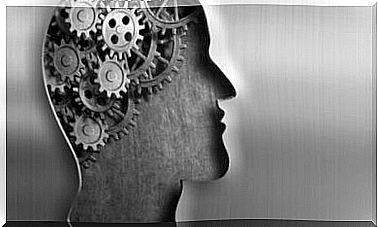Causes And Symptoms Of Heat Stress

Stress is a state of physical and mental tension that, generally, comes from a situation of higher performance than usual. It can also be the reaction to situations or thoughts that make us feel nervous, frustrated or threatened. However, it can also be determined by environmental factors, such as heat stress.
This type of stress refers to the feeling of discomfort that is experienced in conditions that prevent or make it difficult to maintain optimal body temperature. Specifically, it is used for workers who in the workplace face a radical change in temperature and conditions do not allow or hinder thermal regulation.
Thus, the causes of thermal stress are related to an excess of heat, cold, humidity or air. These changes in temperature or environmental conditions can affect health, safety and well-being if the person is frequently exposed. For its part, the symptoms of short-term heat stress range from headache, weakness, fatigue, dizziness, nausea, confusion … to possible heat stroke or hypothermia.

What leads to heat stress?
Whether a worker suffers from heat stress depends on three factors that may or may not occur simultaneously and that make it difficult for the body to maintain internal temperature:
- Environmental conditions : refers to temperature, relative humidity, radiant heat and air movement.
- The temperature indicates the specific degrees that are in a certain place and time.
- Relative humidity influences the air’s ability to admit sweat evaporation. Thus, when the environment is humid, sweat is less effective in cooling the body.
- Radiant temperature is related to the thermal sensation and consists of the exchange of heat between the body and the heat or cold emitting surfaces that surround it.
- Higher air velocity helps dissipate heat produced by a body, as it removes excess heat through heat. On the other hand, if the air temperature is equal to or greater than that of the skin, the air does not help to regulate the temperature.
- Intense physical activity. Muscle activity increases the heat produced by the body, multiplying by 10 compared to a state of rest. Although this metabolic heat rate varies depending on each person, exercise modifies the physiological response and conditions the temperature experienced, as well as the acclimatization process. For this reason, in jobs that require physical activity, it is necessary that the conditions facilitate thermoregulation.
- Clothing. The body cools itself mainly by perspiration from the skin, through the sweat glands. Thus, the clothing or personal protective equipment that you wear at work affects your ability to evaporate heat.
Symptoms of heat stress
Exposure to the aforementioned factors causes the body to activate physiological mechanisms that control temperature, assuming an effort for it.
Thus, in the circumstances in which this mechanism is not sufficient and the temperature cannot be regulated, it increases even more, triggering a series of heat disturbances that can have serious consequences.
The main symptoms of this heat stress are the following:
- Sudden and profound feeling of fatigue, dizziness, or fainting.
- Profuse sweating for hours.
- Increase in internal temperature, being equal to or greater than 38º C.
- The color of the urine darkens.
- Over time, the person may lose about 1.5% of their weight during the workday, possibly due to dehydration.
- Acceleration of the heart rate. To know if it is above normal during the performance of a task, a calculation must be made based on age: 180 beats per minute (bpm) the age of the person is subtracted. For example, 180-40 years: 140 bpm.
- Worse recovery of normal heart rhythm. After one minute of exertion, your heart rate should not be above 120 bpm.
- You have symptoms of heat illness: rash, edema, fainting, muscle cramps, loss of consciousness, or heat stroke.
- In addition, behavioral disturbances may occur that can cause accidents or incidents.
Consequences of heat stress
In normal conditions in which the temperatures are high, alterations in their behavior can be observed in people. This would be aggravated when, in addition, there is a risk of heat stress.
Thus, excessive heat produces a reduction in work capacity, affecting their ability to properly perform their tasks. This can affect not only your mental and physical health, but there is also an increased risk of accidents even in non-work contexts.
This risk of accidents occurs due to various reasons. On the one hand, the physiological and psychological changes associated with high (or low) temperatures decrease the capacity for attention and concentration, causing the person to become more distracted and tired. Inevitably, this leads to the person paying less attention to possible risks or not taking appropriate action. For example, they decide to do without a protective garment because it generates more heat.
Furthermore, heat stress is linked to long-term illnesses. Among them, it has been associated with chronic damage to the heart, kidneys and liver. In fact, one study found that people who had suffered from heat-related illnesses had a 40% higher risk of mortality and cardiovascular and ischemic diseases than those treated for appendicitis.

In conclusion
Heat stress affects the body significantly, generating a series of symptoms and physiological changes similar to those of general stress. It disrupts the normal functioning of the body, causes increased secretion of cortisol and adrenaline and, in the long term, can have serious health consequences.
For this reason, it is important to evaluate that there are adequate temperature conditions in workplaces and, by extension, in any closed space. If you notice that you have any symptoms and you could be suffering from heat stress, contact your occupational doctor or your health center and consult them.









